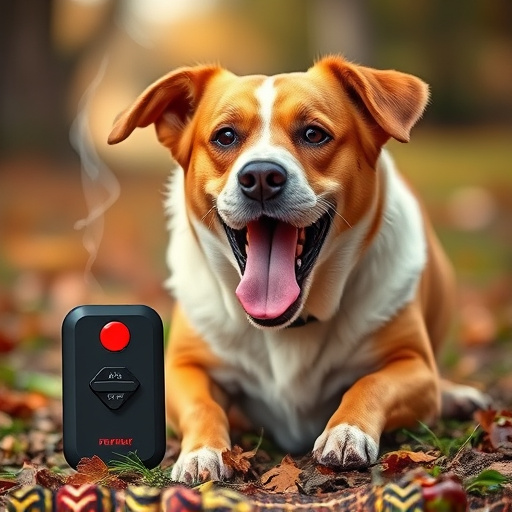Rigorous compliance testing is essential for dog repellent devices (DRDs), ensuring their safety, effectiveness, and adherence to regulations. This includes assessing sound pressure levels to prevent hearing damage, evaluating durability in varying conditions, and scrutinizing performance without causing distress. Sonic DRDs, leveraging high-frequency sound waves, must undergo such tests to confirm their reliability in managing canine behavior without harming pets or wildlife. With growing popularity among property owners seeking humane solutions, regular improvements in technology backed by positive feedback underscore the safety and reliability of these products.
“Unleash a humane and effective solution to animal control with our in-depth look at Dog Repellent Device Compliance Testing. Explore the cutting-edge technology behind sonic repellents designed specifically for dog deterrence. From scientific principles to real-world implementation, this article unravels the effectiveness of these innovative systems. Discover how they not only comply with safety standards but also provide a reliable and non-invasive method to address canine behavior issues, ensuring peace in shared spaces.”
- Understanding Dog Repellent Device Compliance Testing
- The Science Behind Sonic Repellents for Dogs
- Implementing and Effectiveness of Animal Control Sonic Repellent Systems
Understanding Dog Repellent Device Compliance Testing
When considering a dog repellent device, understanding its compliance testing is paramount. This involves assessing how well the device adheres to safety standards and regulations, ensuring it’s effective yet harmless to both dogs and humans. Compliance testing includes evaluating factors like sound pressure level (decibels) to guarantee it operates within safe limits, preventing any potential hearing damage to animals or bystanders.
The process also delves into the device’s design and construction, checking for durability and reliability in various environmental conditions. It examines how well the repellent system performs under different usage scenarios, ensuring it consistently deters dogs without causing distress or harm. This rigorous testing is vital to verify a dog repellent device’s safety, efficacy, and overall quality.
The Science Behind Sonic Repellents for Dogs
Sonic repellents designed for dogs operate on the principle of using high-frequency sound waves to create an unpleasant experience for the animal, effectively deterring them from a specific area. These devices emit sounds beyond the human hearing range, typically between 23-100 kHz, which are perceived as annoying or even painful to dogs. This technology has gained popularity as a humane alternative to traditional repellents that use chemicals or shock.
Compliance testing for dog repellent devices is crucial to ensure their effectiveness and safety. Manufacturers must adhere to strict standards and guidelines set by regulatory bodies. These tests involve assessing the device’s ability to repel dogs, its impact on non-target animals, and its overall performance under various conditions. By undergoing rigorous compliance testing, these sonic repellents can provide reliable results without causing harm to pets or wildlife, making them a viable solution for managing canine behavior in public spaces.
Implementing and Effectiveness of Animal Control Sonic Repellent Systems
Implementing animal control sonic repellent systems is a growing trend among property owners seeking humane and effective solutions to deter unwanted wildlife. These devices emit high-frequency sound waves designed to disrupt animals’ communication and sensory perception, encouraging them to avoid the treated areas. The effectiveness of these systems has been demonstrated through various studies and real-world applications, particularly in controlling dogs, foxes, and other small mammals.
Compliance testing is a critical aspect of ensuring that animal control sonic repellent devices operate within safe and effective parameter ranges. Such tests verify that the devices meet regulatory standards for sound pressure levels, ensuring they are not harmful to humans or domestic animals. By adhering to these guidelines, manufacturers can offer reliable products that deliver on their promises, providing peace of mind for users and safety for both wildlife and pets, as evidenced by continuous improvements in technology and positive user feedback.
Animal control sonic repellent systems offer a innovative and non-lethal approach to managing dog behavior. By understanding the science behind these devices, ensuring compliance with testing standards like Dog Repellent Device Compliance Testing, and evaluating their effectiveness, we can harness the power of sound to create quieter, more harmonious environments for both pets and people.
